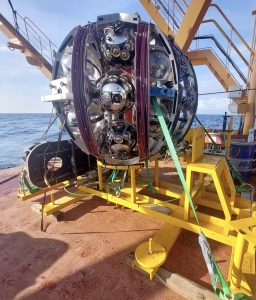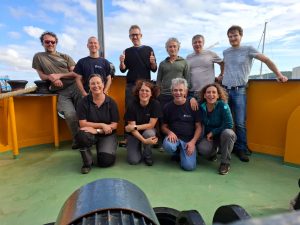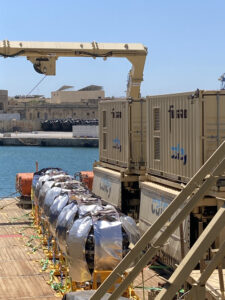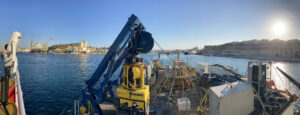Welcome ARCA33 and ORCA24!
28 October 2024 – The latest sea campaigns at both the KM3NeT’s ARCA and ORCA sites have led to major progress in expanding detector installations and improving calibration systems.
The number of detection units in operation in the deep sea has been increased to 57: 33 in ARCA and 24 in ORCA.
Despite bad weather at the ARCA site, the so-called Phase-1 part of the apparatus was completed, while construction of Phase-2 was started with the installation of two new junction boxes, three detection units (exploiting a new data acquisition architecture), and calibration components. The operations also included important maintenance tasks, such as recovering and replacing acoustic beacons. All optical modules of the deployed strings are fully operational. KM3NeT/ARCA now comprises 33 detection units.
At the ORCA site, a 60-hour calm weather window allowed the team to deploy the Calibration Unit (Calibration Base+Instrumentation Unit) and to install an additional detection unit. After these successful installations, node 1 of ORCA is complete and fully functional, an important milestone in the construction of ORCA. The total number of functional detection units at ORCA has now reached 24.






























